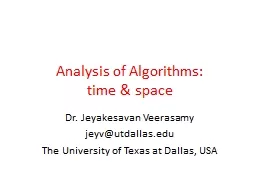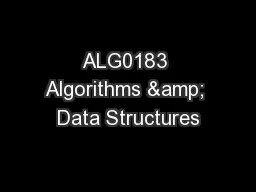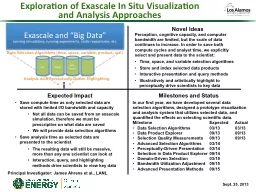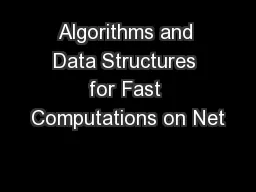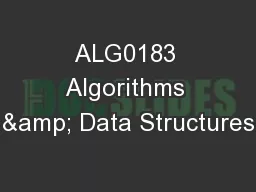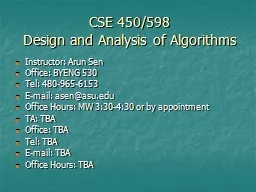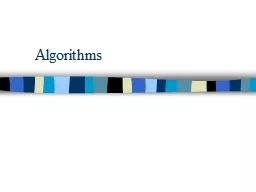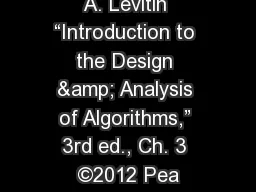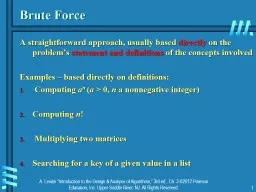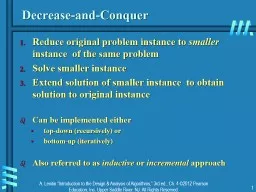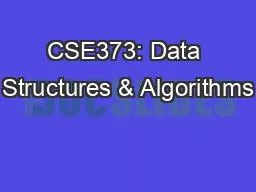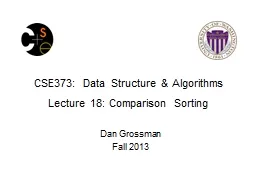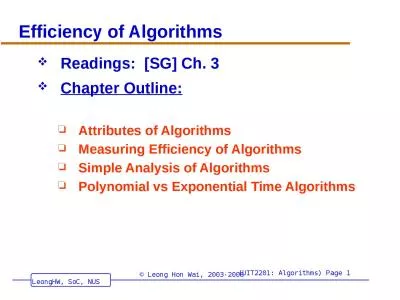PPT-Analysis of Algorithms: time & space
Author : min-jolicoeur | Published Date : 2018-11-18
Dr Jeyakesavan Veerasamy jeyvutdallasedu The University of Texas at Dallas USA Program running time When is the running time waiting time for user noticeableimportant
Presentation Embed Code
Download Presentation
Download Presentation The PPT/PDF document "Analysis of Algorithms: time & space" is the property of its rightful owner. Permission is granted to download and print the materials on this website for personal, non-commercial use only, and to display it on your personal computer provided you do not modify the materials and that you retain all copyright notices contained in the materials. By downloading content from our website, you accept the terms of this agreement.
Analysis of Algorithms: time & space: Transcript
Download Rules Of Document
"Analysis of Algorithms: time & space"The content belongs to its owner. You may download and print it for personal use, without modification, and keep all copyright notices. By downloading, you agree to these terms.
Related Documents

